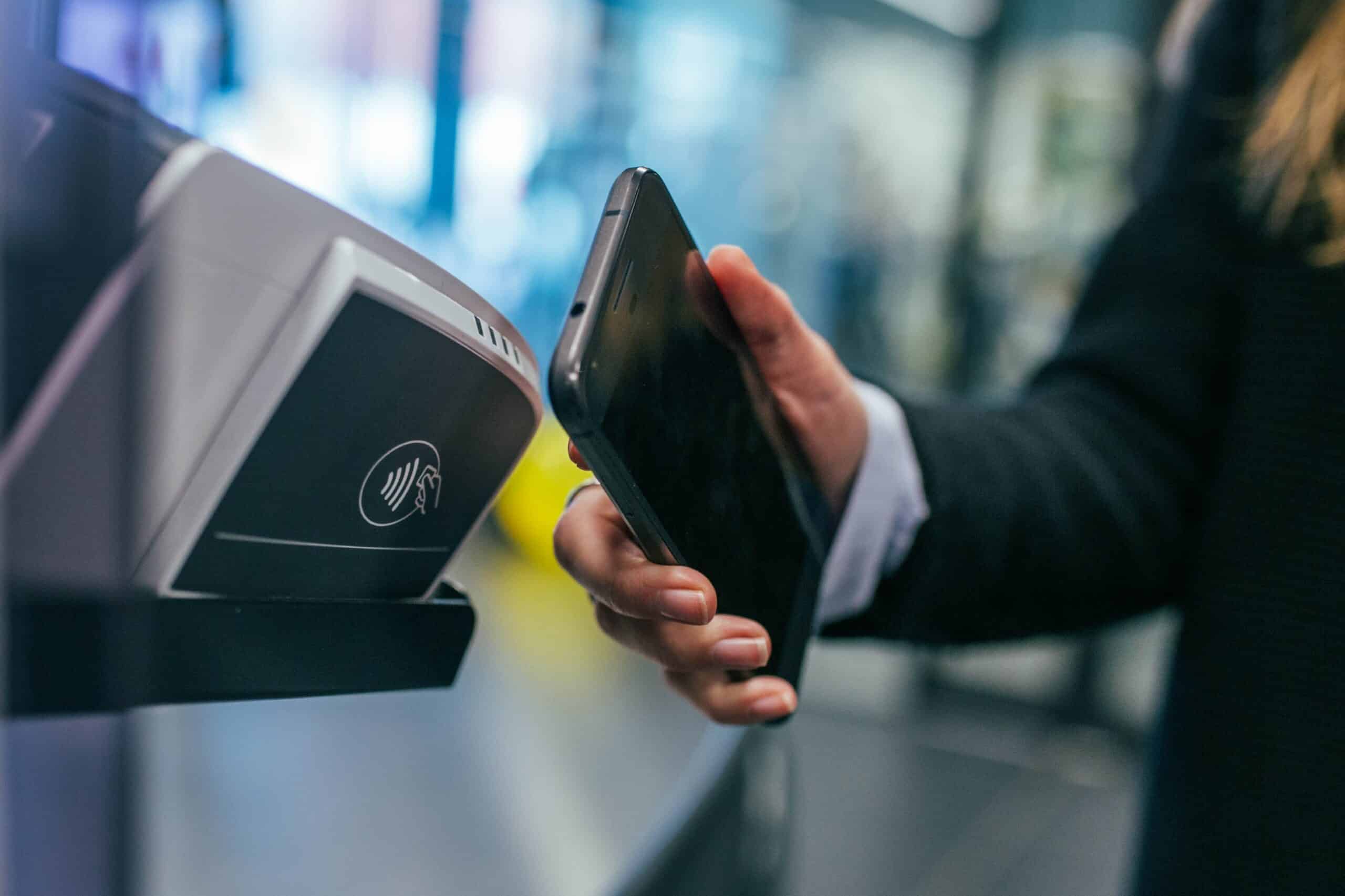Mobile payments include digital wallets, apps, and other technology that allow customers to pay without pulling out cash or a card. While adoption of the technology was slow to start, it’s rapidly becoming the payment method of choice, especially for younger shoppers. 49% of ecommerce transactions worldwide were completed using a mobile payment method in 2022. Meanwhile, about 29% of in-store purchases were paid for using a mobile payment method. Here’s everything merchants need to know about this latest payment trend.
1. Over 40% of U.S. Smartphone Users Pay with Mobile Payments
According to Statista, more than 40% of consumers in the United States who owned smartphones used that phone to make at least one contactless payment in 2021. That includes NFC, MST, and QR code payment methods. This number is only expected to grow so merchants can no longer afford to ignore this payment trend.
2. Millennials Especially Prefer Digital Wallets for Online Shopping
A 2020 survey found that 46% of Millennial consumers preferred paying with a digital wallet when shopping online. But other generations weren’t far behind. The same survey found that 44% of both Generation X and Generation Z also preferred digital wallets for ecommerce. That means any merchant whose target customer is under the age of about 55 needs to get serious about offering mobile payment options.
3. Most Mobile Wallets Use Near Field Communication
Near Field Communication (NFC) is a technology that allows two devices to exchange information via radio waves when they’re close to each other. When a merchant initiates an NFC payment through their Point-of-Sale system, it will send out a signal that searches for the nearest NFC-enabled payment device. Once it finds it, it transmits the transaction info to that device and the device responds by transmitting the payment information. The signal range is limited to about four inches to avoid interference from any other NFC-enabled devices in the area. Many digital wallets also use enhanced security features like encryption and tokenization to protect the sensitive transaction information being exchanged between a merchant’s POS and a customer’s smartphone or smartwatch. While these kinds of payments are secure, fast, and frictionless, merchants do need to have a POS system that is NFC-enabled in order to accept them. If your current system doesn’t already have that feature, that may mean investing in an upgraded system.
4. Samsung Pay Use Magnetic Secure Transmission
Magnetic Secure Transmission (MST) is similar to NFC except that it uses magnetic signals instead of radio waves. The advantage here is that it can work with any POS system that has a magstripe reader—so if your customers can already swipe a card to pay, you have the hardware needed to accept Samsung Pay. All merchants have to do to start accepting it is making sure both customers and staff are aware that you offer that payment option.The drawback for merchants is that MST technology is proprietary and exclusively owned
by Samsung. So if merchants only offer mobile payments using MST, they’re leaving out any customer who doesn’t own a Samsung device. On that same note, some newer POS systems that are NFC-enabled might leave out the magstripe reader since swiping cards is becoming less popular with the rise of newer payment trends. So if you want to accept both NFC and MST payments to make sure as many customers as possible are able to use their digital wallets, you need to make sure the upgraded NFC-enabled POS system still has a magstripe reader.
5. PayPal and WeChat Pay Use QR Codes
While NFC is probably the most widely used mobile payment technology, QR codes are a close runner up. This method can work in one of two ways. First, the merchant can generate a QR code that the customer can scan. That code will take the customer to a payment page on their smartphone where they can complete the payment. The second method involves the customer’s payment app displaying a QR code that the merchant scans. This QR code is linked to the payment information stored in that app. In order to accept payments using this second method, a merchant would need to have the same app that the customer is using to display the code. If your customer is using the PayPal app, for example, you would also need to have the PayPal app installed on your device. The transaction fees on QR code payments can be higher—more on that below—but the flexibility and convenience can make it a great option for some merchants. The ability to just download an app on your phone or tablet that offers QR code payments is an easy and fast way to start accepting payments. That can be especially valuable for merchants who travel often to sell their products at different events or pop-up store fronts. Still, a mobile POS system is usually a better long term solution since they allow merchants to accept far more than just QR code payments and often come with extra helpful features like inventory management and sales tracking.
6. Most Mobile Payments Don’t Cost Anything Extra for Merchants
While the technology is different, the interchange fees generally stay the same for most mobile payment methods. When a customer uses a digital wallet inside your store, it’s still classified as a card-present transaction just as it would be if they swiped or inserted an actual credit card. That’s great news for merchants who handle a lot of in-person sales because it means you won’t have to worry about your interchange rate skyrocketing when you start accepting mobile payments. The only extra cost will be the upfront cost of upgrading your Point-of-Sale system if it’s not currently able to handle NFC payments. So there’s really no excuse for merchants to ignore this rapidly growing payment trend. The only exception to this is mobile payments that use QR codes. These are generally classified as card-not-present transactions which are subjected to higher interchange rates than card present transactions. For ecommerce businesses, this won’t make a difference in your bottom line because you’re already paying the higher card-not-present rate on every transaction anyway. For merchants who only do business at one location, though, those higher rates mean you’ll want to weigh the pros and cons of accepting QR code payments carefully. If there isn’t much demand from your customers for this specific type of mobile payment option, you might be fine not offering it. However, customers increasingly expect to have a wide variety of payment options available to them so it may be worth eating the fees to ensure you don’t lose out on sales by alienating customers that would prefer to use this payment method.
Frequently Asked Questions About Mobile Payments
Here are some of the most frequently asked questions merchants have about mobile payments.
What is mobile payment and how does it work?
A mobile payment is any payment made using a digital wallet or payment app. There are a few different kinds of technology used to make this possible, but, generally, all work by transmitting encrypted transaction information between two devices—like a customer’s smartphone and a merchant’s point-of-sale system.
What is the biggest mobile payment platform?
In terms of number of users, AliPay and WeChat Pay are the two biggest mobile payment platforms in the world but they’re only widely used in China where the apps were developed. Outside of China, Apple Pay is the most popular and the market leader in terms of transaction volume.
Who uses mobile payments?
Millennials and Generation Z are, unsurprisingly, leading the charge when it comes to using mobile payments but older generations aren’t actually that far behind. Younger shoppers are more likely to use mobile payments on a regular basis, but at least 44% of Generation X has at least tried the modern payment method and are interested in using it more often.





